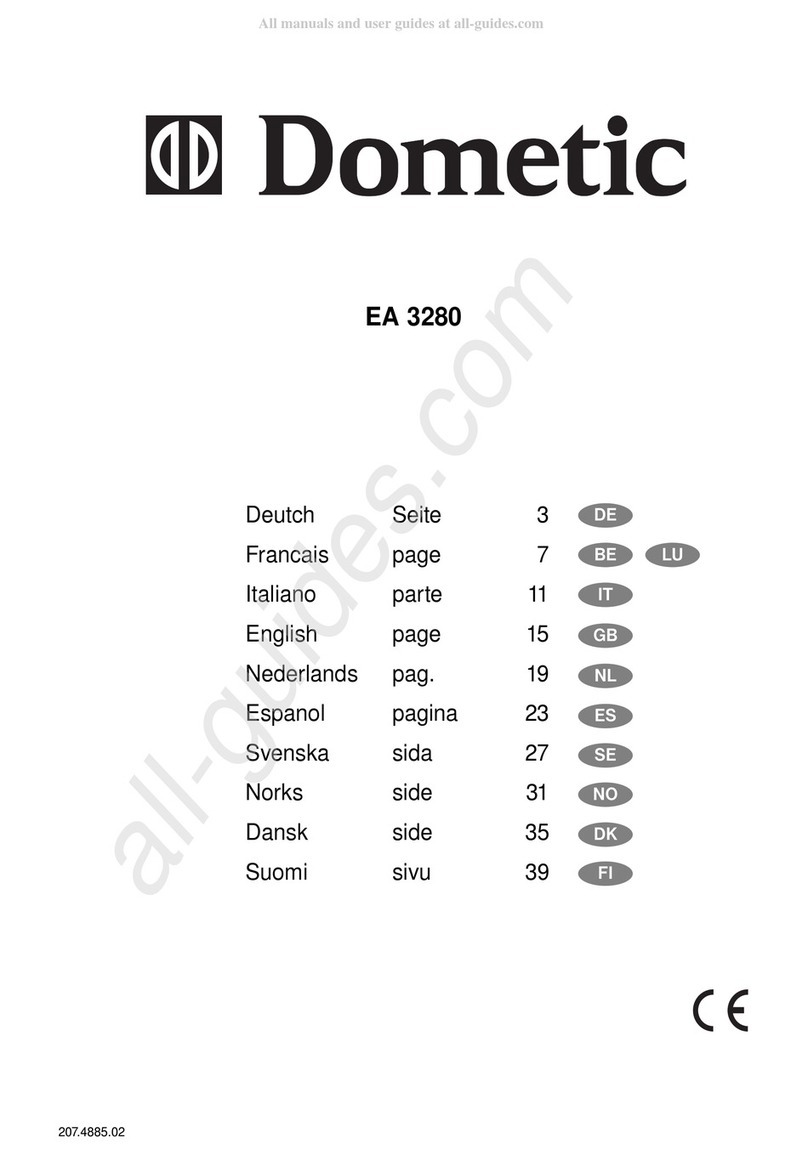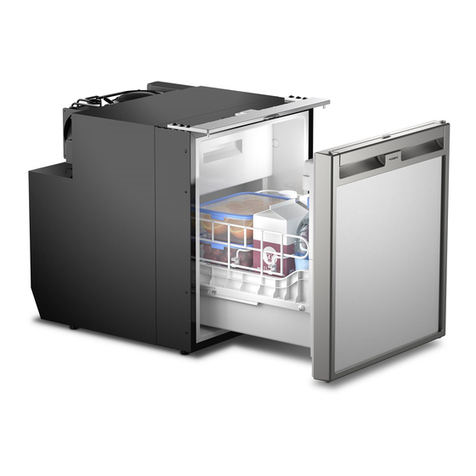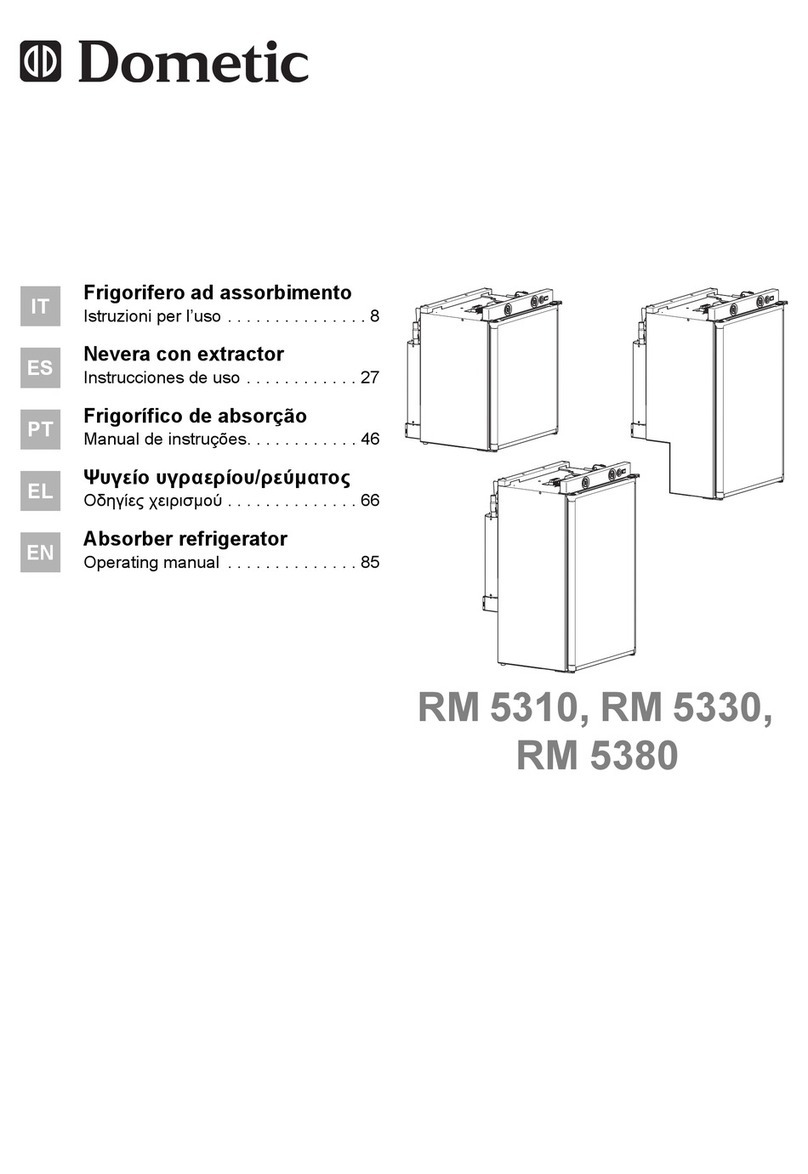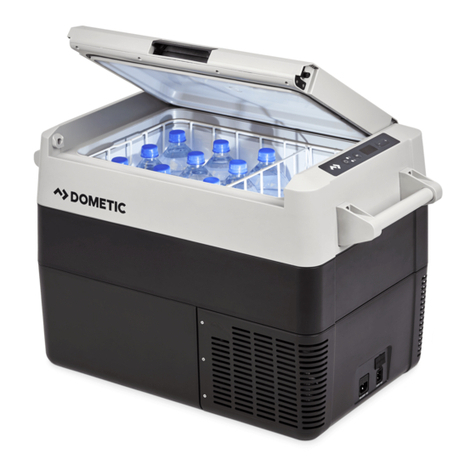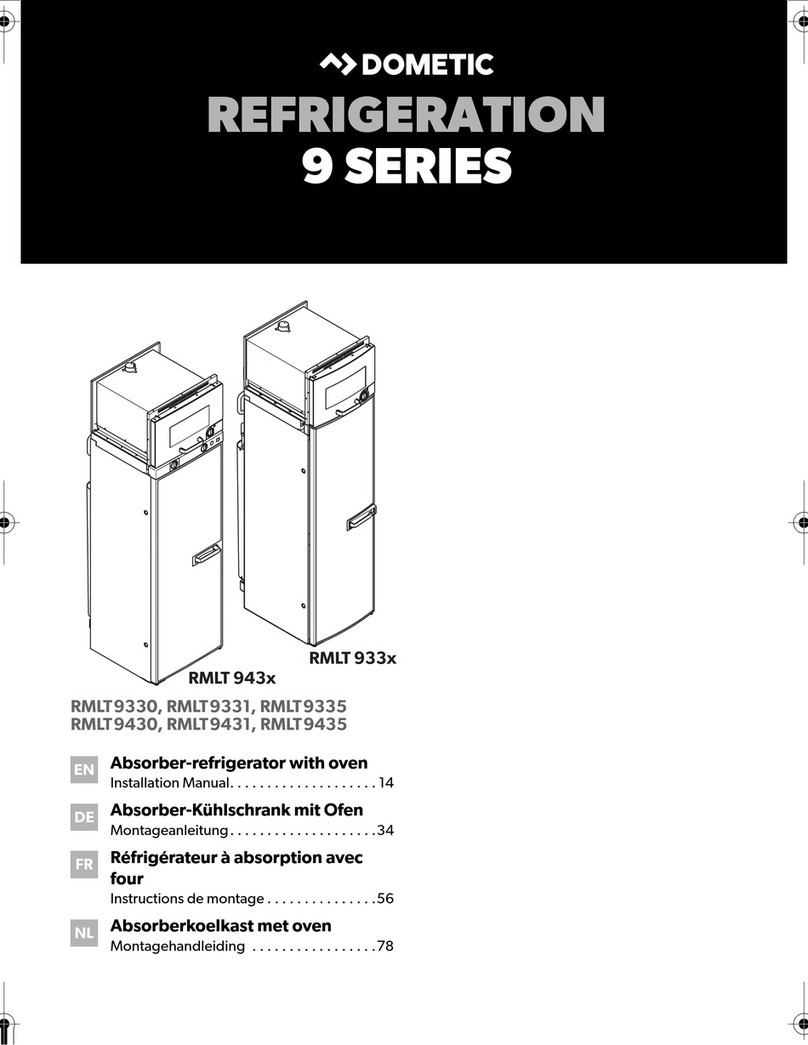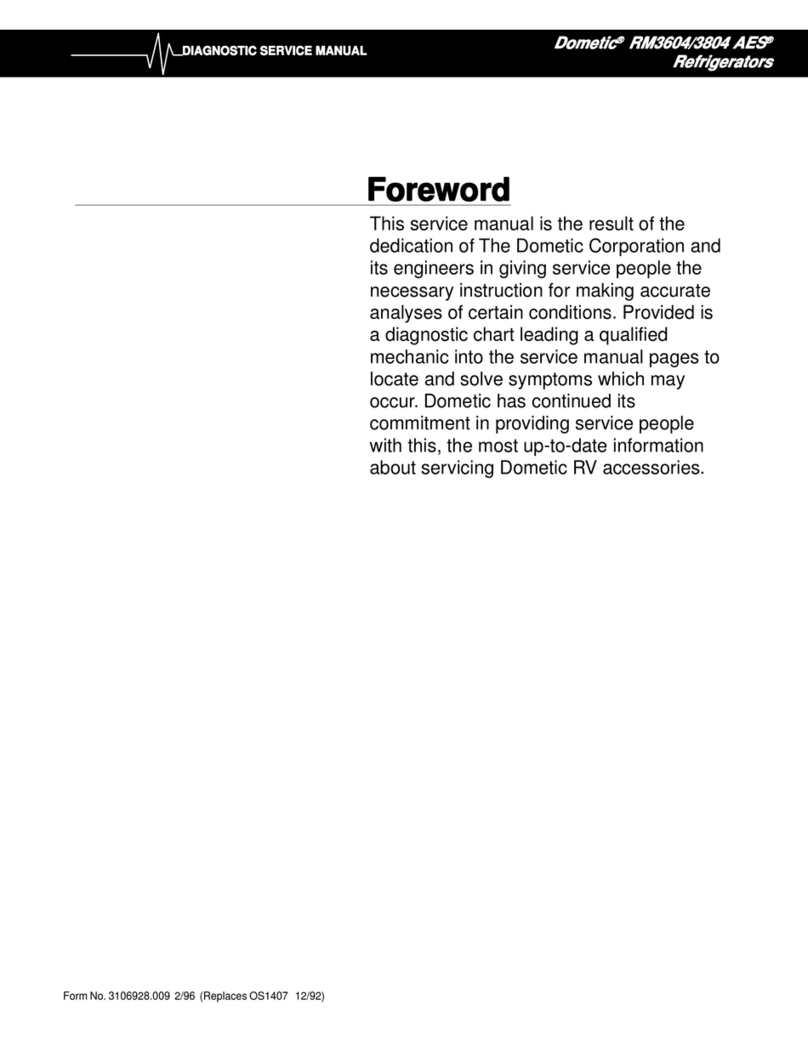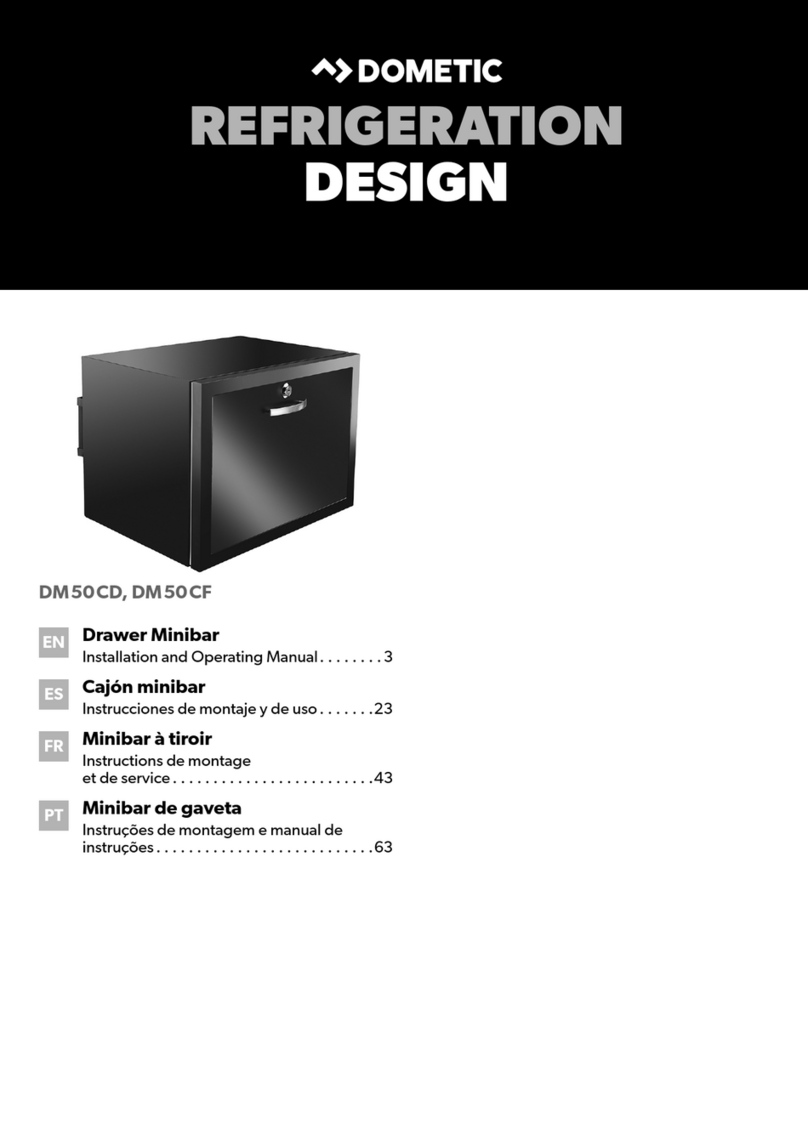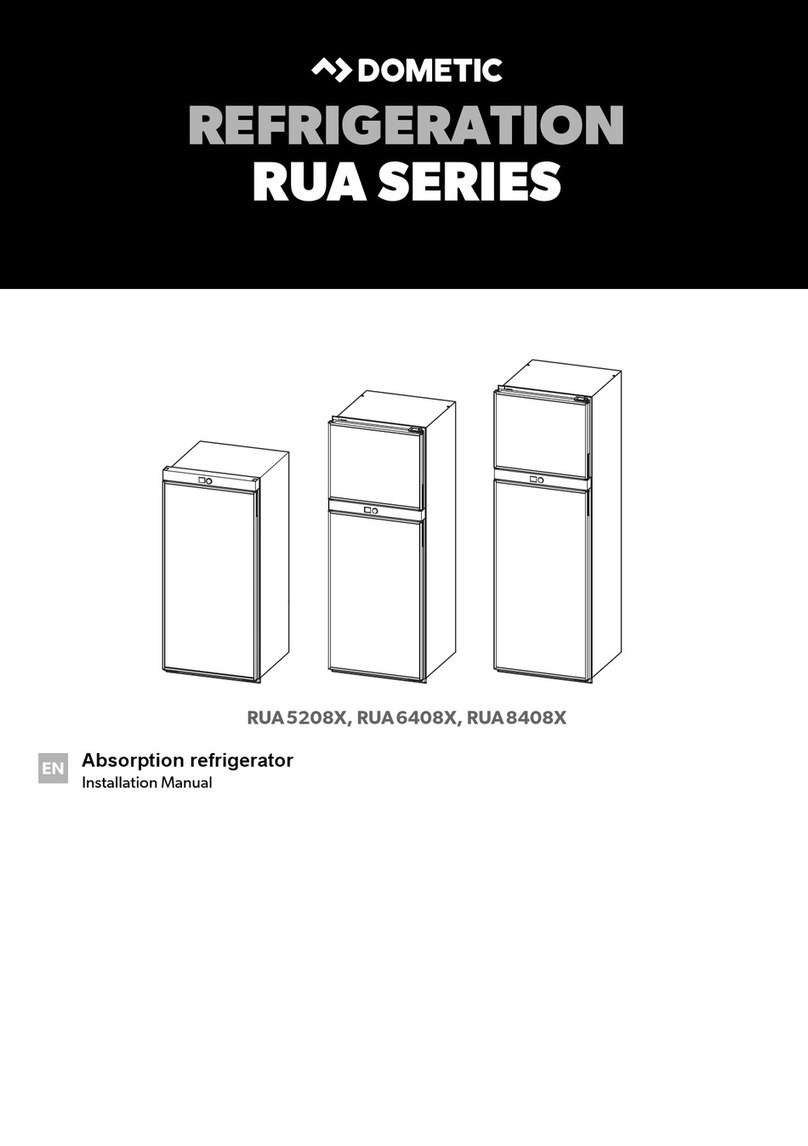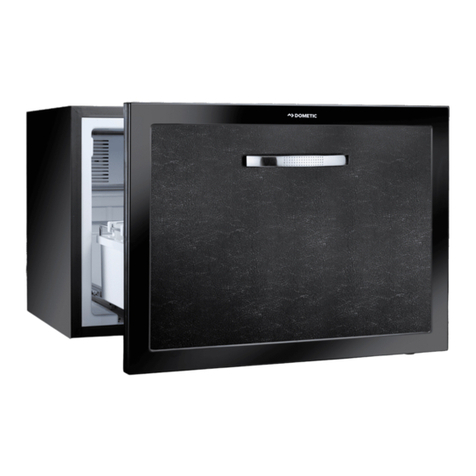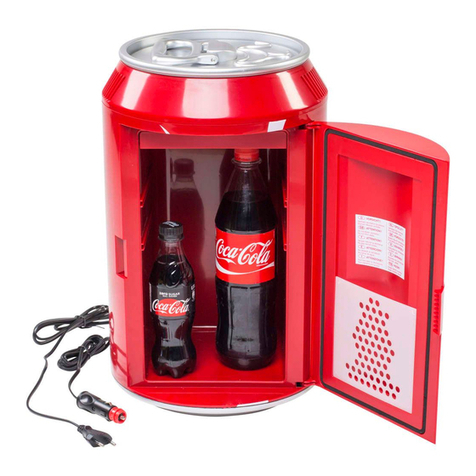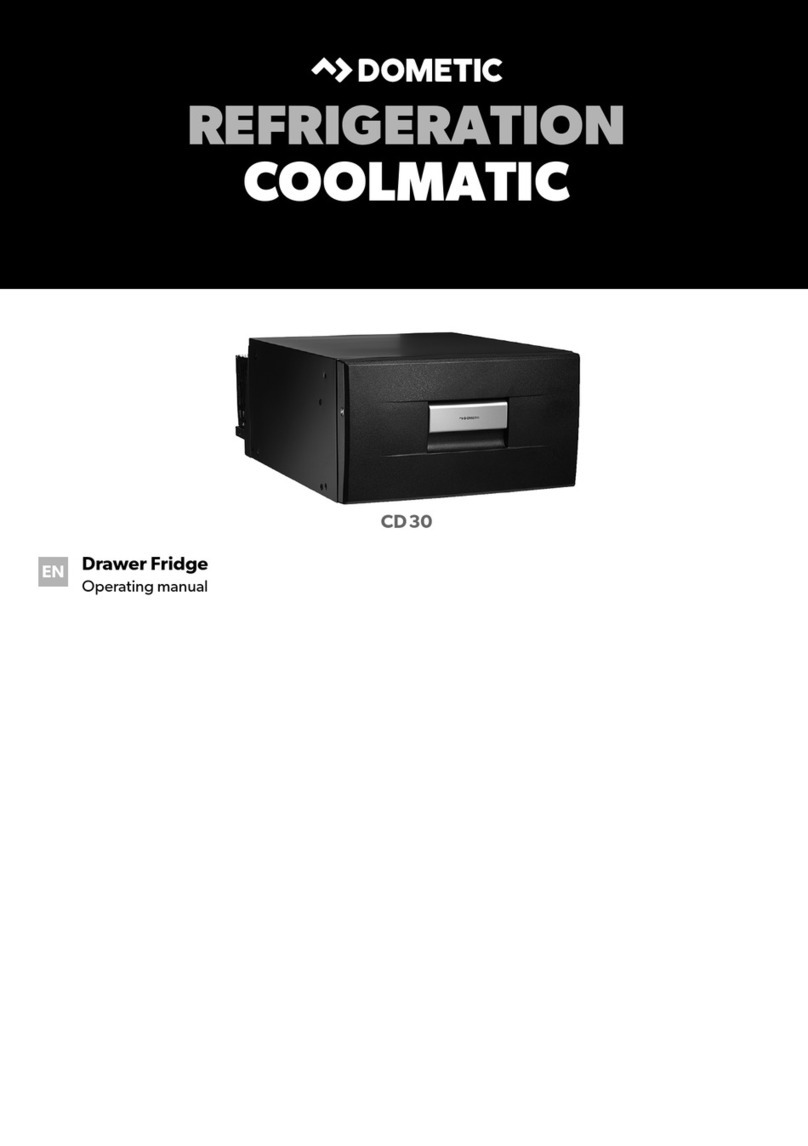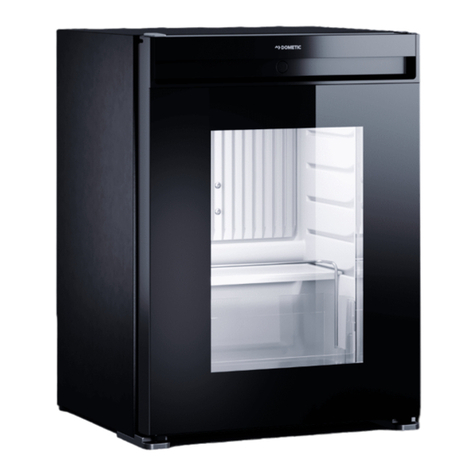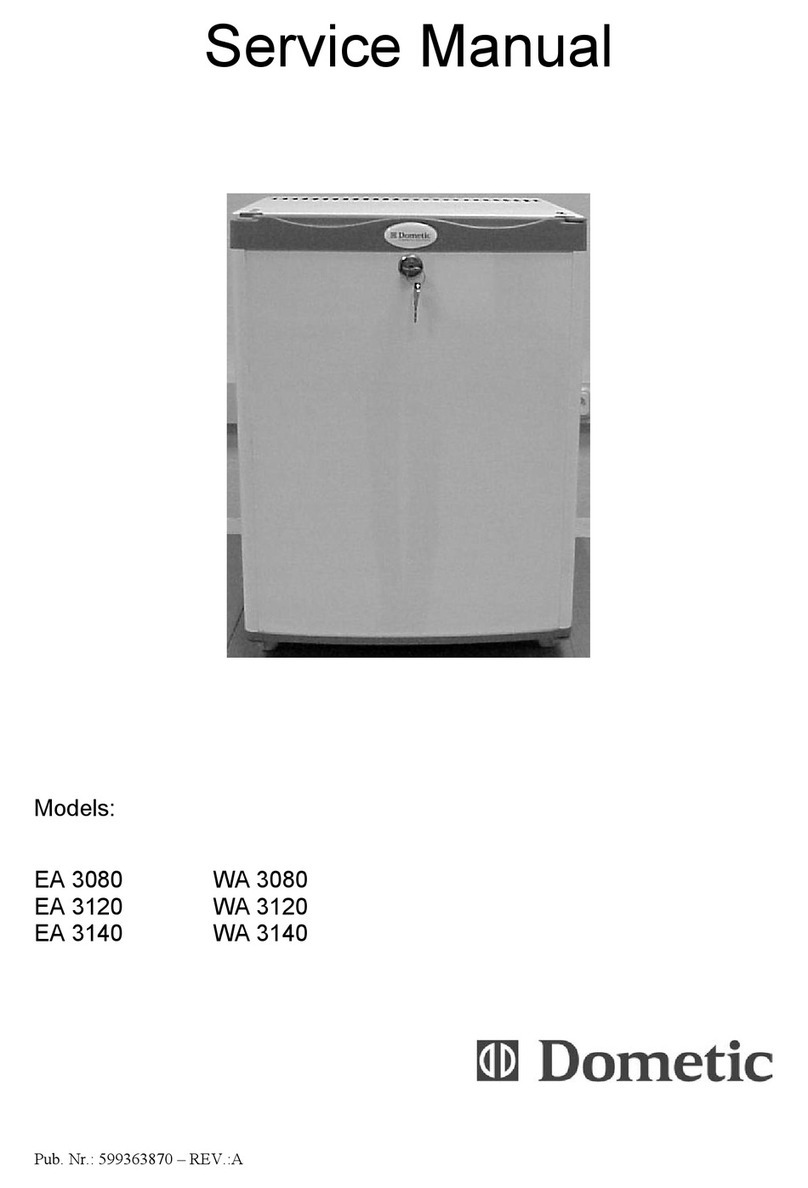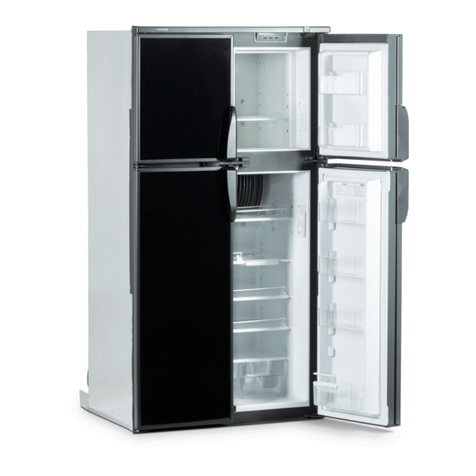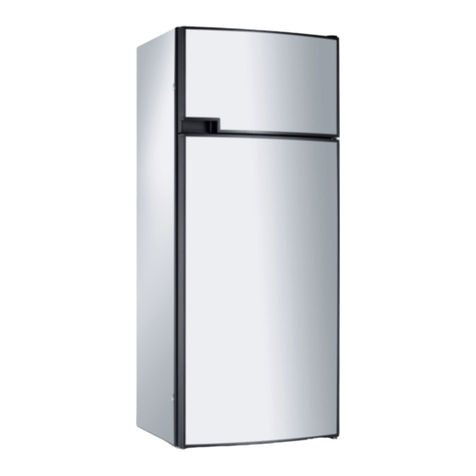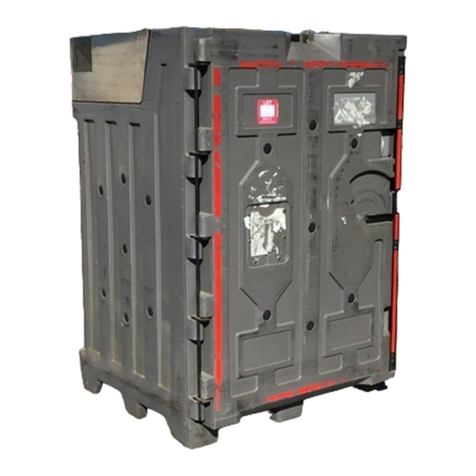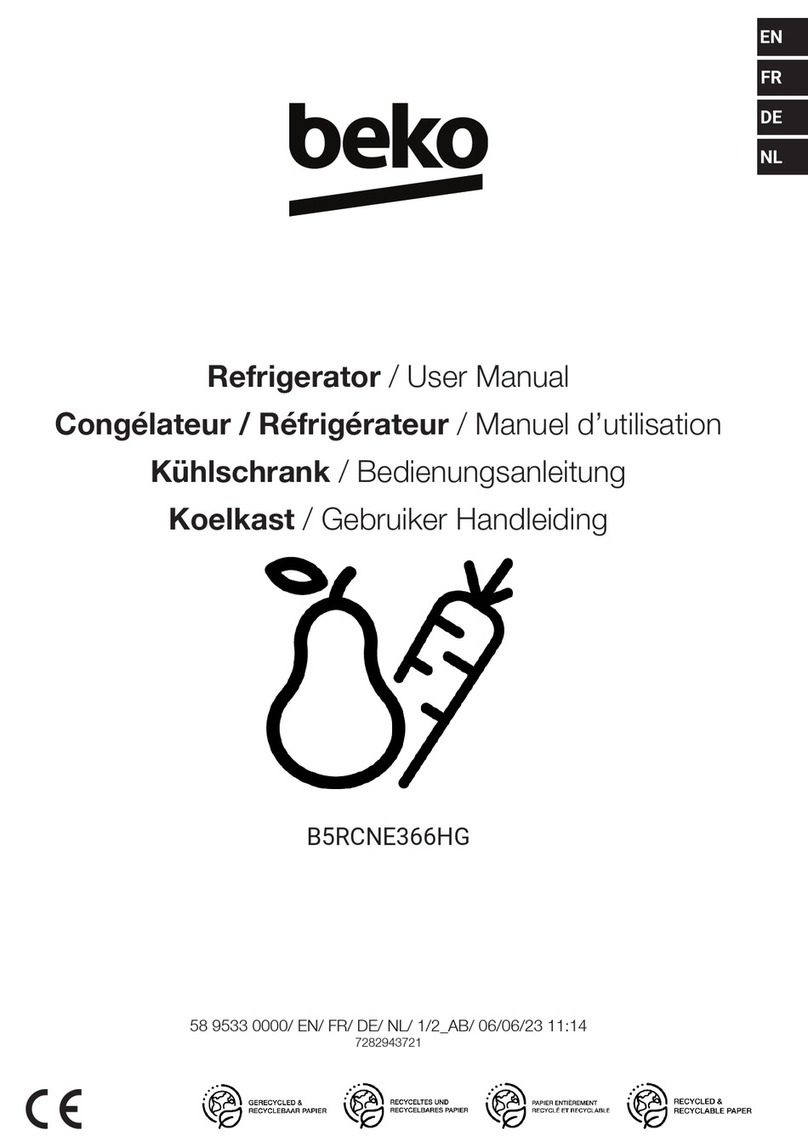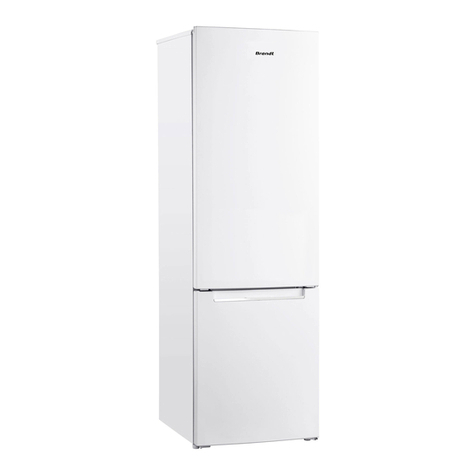ELECTRICAL CONNECTION
120 Volts AC Connection
The refrigerator is equipped with a three-prong (ground-
ing) plug for your protection against shock hazards and
should be plugged directly into a properly grounded
three-prong receptacle. DO NOT cut or remove the
grounding prong from this plug. The free length of the
cord is 2 feet and therefore recommended that the
receptacle be located to the left side of the refrigerator
(viewed from the rear) and approximately 6 inches from
the floor (see FIG.11).This allows easy access through
the vent door. The cord should be routed to avoid direct
contact with the burner cover, flue cover or any other
components that could damage the cord insulation.
12 Volts DC Connection
This refrigerator model is not designed for 12 volt DC
operation of the cooling system; however, 12 volt DC
must be supplied to the refrigerator to operate the
controls. Use a minimum of 14 gauge wire between
thebattery and refrigeratortosupplythecontrolvoltage.
The connection is made to the positive (+) and negative
(-) terminals of the terminal block onbackof refrigerator.
(See FIG. 1). Correct polarity must be observed when
connecting to the DC supply.
DO NOT use the chassis or vehicle frameas one of the
conductors. Connect two wires at the refrigerator and
route to the DC supply.
The distance the current must travel from the battery to
the refrigerator dictates the AWG wire size to be used.
Should the wire be too small for the distance, a voltage
drop will result.
The connections must be clean, tight and free from
corrosion.
OPERATING
INSTRUCTIONS
IMPORTANCE OF LEVELING A
REFRIGERATOR
In an absorption refrigerator system, ammonia is lique-
fied in the finned condenser coil at the top rear of the
refrigerator. The liquid ammonia then flows into the
evaporator (inside the freezer section) and is exposed
to a circulating flow of hydrogen gas, which causes the
ammonia to evaporate, creating a cold condition in the
freezer.
When starting this refrigerator for the very first time, the
cooling cycle may require up to four hours of running
time before the cooling unit is fully operational.
The tubing in the evaporator section is specifically
sloped to provide a continuous movement of liquid
ammonia, flowing downward by gravity through this
section.If the refrigerator is operated when it is not level
and the vehicle is not moving, liquid ammonia will
accumulateinsectionsof the evaporatortubing.Thiswill
slow the circulation of hydrogenand ammonia gas, orin
severe cases, completely block it, resulting in a loss of
cooling.
Any time the vehicle is parked for several hours with the
refrigerator operating, the vehicle should be leveled to
prevent this loss of cooling. The vehicle needs to be
leveled only so it is comfortable to live in (no noticeable
sloping of floor or walls).
When the vehicle is moving, the leveling is not critical,
as the rolling and pitching movement of the vehicle will
pass to either side of level, keeping the liquid ammonia
from accumulating in the evaporator tubing.
OPERATION
Before startingtherefrigerator,checkthatallthemanual
gas valves are in the ON position. DO NOT forget the
manual shut-off valve on the rear ofthe refrigerator, see
FIG. 1.
This refrigerator is equipped with a control system,
which can be set to automatically select either 120 volt
AC or LP gas operation (AUTO mode), or if desired LP
gas only (GAS mode).
In both AUTO mode and GAS mode operation, the
temperature is controlledbya factory preset temperature
setting.
The refrigerator controls will work down to 9.6 volt DC.
! WARNING
Most LP gas appliances used in recreational ve-
hicles are vented to the outside of the vehicle.
When parked close to a gasoline pump, it is
possible that the gasoline fumes could enter
this type of appliance and ignite from the
burner flame, CAUSING A FIRE OR AN EXPLO-
SION.
FOR YOUR SAFETY, when refueling, shut off all
LP gas appliances which are vented to the out-
side.
FIG. 11
6"
120 Volt AC
receptacle
8

